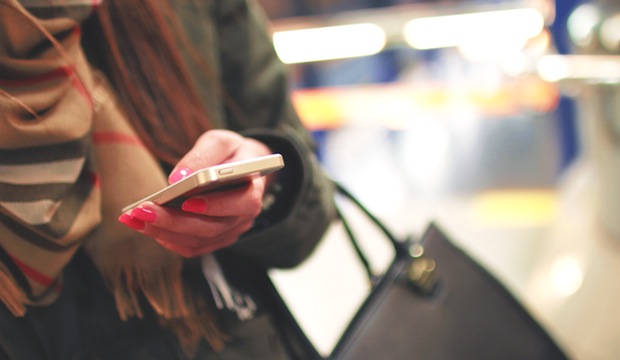
Promoted pins opened up to the masses over the past year, which is huge for smaller businesses and startups, and allows brands to reach more of their potential customers through this ultra visual social platform.
What are promoted pins?
Promoted Pins are a paid advertisement opportunity for your brand to choose your best pins to appear in the most relevant places within Pinterest with selected targeting to drive awareness, engagement, or traffic to your website.
Why it works:
The Pins appear natively within Pinterest so it allows consumers to engage with your content as if it were a part of their regular Pinterest experience. It is not interrupting their feed or visual exploration and discovery of pins they are excited to check out.
How to choose your pins:
Remember why people are on Pinterest. They are there to discover and plan. Those are the native behaviors of Pinterest users on a daily basis between fashion, fitness, food, weddings, vacation, so on and so forth. They want to be inspired. They want to discover. And they want to plan their own lives through those ideas.
In addition, because there is so much content on pinterest, especially within the fashion sphere, it is important to be consistent and have regular weekly content. When you see which one of your weekly content is performing well, you can decide which of those pins to promote.
Case Study by Pinterest on MVMT Watches
MVMT Watches started using Pinterest as a way to connect with women. When they saw higher-than-expected engagement, they ramped up their strategy.
The watch company adds Pins of products as well as lifestyle photography, though high quality, close-up shots of watches perform the best.
“A lot of people that come for Pinterest are in discovery mode, looking for products to purchase for themselves or others,” said Jake Kassan, CEO. “Pinterest is different from other channels but when done correctly, it can have huge results.”
MVMT Watches promoted their Pins and saw higher average order values and conversion rates from visitors referred to their site from Pinterest. In fact, Pinners convert at a rate 2X higher than users from other channels.
Targeting:
You can target based on gender, location, and devices. Targeting allows you to reach more people who fit your brand based upon your target audience. It helps if you have a certain offer you want to serve to a particular location so you can zero in. Or if you only care to reach people on the go, perhaps you want to reach people on their smartphones versus desktop. These are things to consider as you decide on your promoted pin strategy.
Keywords:
When it comes to keywords be sure you choose strategically. You can choose and up to 150 keywords – so you definitely want to do your research. Check your keywords using Google Adwords Keyword Planner unless you have another tool you prefer. Also, be sure to check the keywords within Pinterest, as Pinterest search can be different than on Google. People typically search on Pinterest the same way that they speak, so you want to write descriptions in plain language as much as possible.
Try answering these questions like:
- What is it?
- Where is it?
- Why is it interesting?
- Why should the reader keep clicking through your brand’s board?
Also remember to write text that will travel well, as your boards and pins will be re-pinned and shared out. Make sure your captions make sense out of context of the Pinterest channel, so that when they’re re-pinned and shared, people won’t be confused by content that’s specific to your brand or your brand’s board.
Purpose of the Pin:
Lastly, but definitely not last in your strategy – you need to consider the purpose of your promoted pin. Is it to gain awareness, engagement, or drive traffic to your website? Knowing the purpose can help you determine the message of your pin, how much money to put behind it, the targeting, and how to measure success.
- Create awareness for your brand by using a channel full of people wanting to discover.
- Create engagement for your brand content and particular campaigns by allowing people to interact with certain aspects of your campaign. For example you would pay for a closeup, repin or click, not a view. You can then make each piece of that engagement interactive and allow your audience to get more out of each piece of that content.
- Create more traffic to your website by allowing people to get more of the story on your site.
Great examples according to Pinterest, of this include:
- Adore Me increased Pinterest-referred revenue by 4000%
- Zola increased conversions by 44% and clickthrough rates by 50%
- Dot & Bo quadrupled the number of people visiting their website, increased repins by 6000% and boosted daily clicks to their site by a whopping 18000%
- Living Royal saw a 31% decrease in cost per acquisition (CPA) and a 6x increase in traffic within the first month of paid promotion on Pinterest
- MVMT Watches found Pinners convert at a rate 2X higher than users on other platforms—and with higher average order values
My overall advice: A/B test to see which pins work best.
Test different imagery and copy. After a few tests you’ll start to see a pattern and learn which ones work best for your audience on Pinterest and you can invest more with that specific type of content going forward.
Another thing to keep in mind is the longevity of content on Pinterest. Once your content is on Pinterest, people will re-pin it over and over. It will live across the channel for much longer than your original campaign, so your content needs legs. Will it make sense later? Food for thought.


hibou
hadn’t thought of doing promotional pins, very good idea!